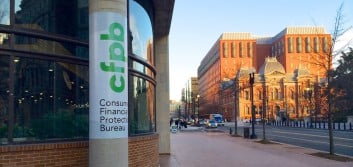Hello old friend – The reappearance of excess deposit bonds

A tsunami of deposits has flooded financial institutions during the COVID pandemic. However, as the economy begins to recover, financial institutions are slowly getting back to growth mode. Even though financial institutions continue to feel pressures of excess liquidity, the tide is changing as consumers face higher prices and the FED looks to tapper liquidity. There are a variety of options for financial institutions to grow deposits. One constant option is the political subdivision/institutional depositor. This type of funding can help your financial institution diversify while avoiding the pitfalls of cannibalizing your local market. However, most political subdivision institutional depositors are bound by investment policies or state statutes requiring collateralization for deposits in excess of the NCUA limits. There are multiple forms of collateralization, each of which has benefits and limitations depending on the depositor and the financial institution’s ability to collateralize.
With the pledging of collateral, a financial institution encumbers their highly liquid investments, which has a negative impact on their Liquidity Coverage Ratio. In addition, there is usually a haircut associated with pledging in addition to ongoing operational maintenance. When issuing a Federal Home Loan Letter of Credit, a financial institution reduces their ability to access the Federal Home Loan Banks (“FHLB”) directly for advances. Operationally, FHLB letters of credit are straightforward. The Letter of Credit is a direct obligation of the FHLB and does not fluctuate in market value.
There is another form of collateral that, until recently, has been saved for banks, but is now available for credit unions. Excess Deposit Bonds (“EDB”) have resurfaced as a feasible source of collateralization. An EDB is a guarantee from an insurance provider that a financial institution will perform its obligation to the depositor. Should the financial institution default in its obligation to the depositor, the EDB can be “drawn” upon, and the insurance provider will make the depositor whole in principal and interest through default.
The reappearance of EDBs is providing financial institutions with an additional securitization option when participating in deposits that require collateral. Furthermore, this type of securitization can be utilized with any type of depositor, unlike Letters of Credit or pledged securities, which are limited to specific types of depositors. However, just like current securitization options, it is important to be cognizant of all tangible and intangible costs. Insurance providers issuing EDBs will charge a premium on the deposit being placed. The cost may vary depending on several factors which include program size, credit quality, duration, etc.
Excess Deposit Bonds are a welcome addition to financial institutions securitization options. They are an efficient option to attract potential depositors that typically weren’t available due to collateral requirements. Furthermore, if used effectively, EDBs can provide regulatory relief. On the surface, EDBs seem more expensive than other forms of securitization, but when factoring in operational cost, functionality, and regulatory diversification, they become a competitive alternative.
Co-author: Todd Terrazas





